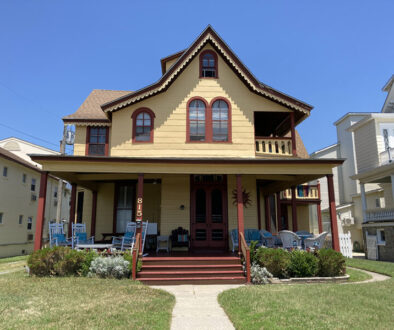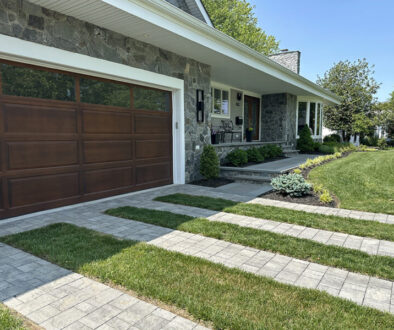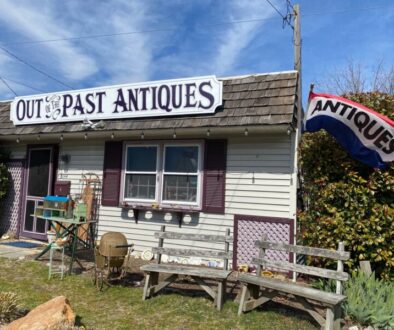Built-Ins for Form & Function
Allison Valtri, of Valtri Interiors, has been in the design business a long time, and she goes deeper than simple interior design. She makes sure that the lifestyle of her clients is addressed before going into a project, and that includes permanent pieces like built-in features.
“I’m the second generation in this business, and my mother was also a psychologist,” says Valtri. “So, I really design by behavior first. We’re confident enough that everything we do is beautiful—we really know how to select finishes and textures and colors and proportions to make it beautiful. But we’re very behavior driven—that is definitely the core of my work.”
Lifestyle choices may not be seen to go hand in hand with determining when and where to include built-in features in your home, but in fact, they are paramount to effective design. Although they can be wonderful tools to customize a space, there’s more to consider than how lovely your framed photos will look upon a pair of built-in bookcases.

“If I’m talking about built-ins generally, I would start by saying there are really two kinds,” Valtri said. “There are the kinds that are task-oriented and there are the kinds that are storage-oriented. That starts the definition of what you’re going to use them for, and then how you’re going to incorporate them into a room.”
Samples of task-oriented built-ins include a mudroom with built-in benches, where children sit to put their shoes on before school each morning, or a built-in home office desk, both of which involve an action taking place around the item. On the other hand, custom hampers in a laundry room could be a little bit more about storage. Visually, the differences might not seem very drastic, but in practice, task-oriented built-ins require a lot more planning.
“That separation of categories is where you start room planning,“ says Valtri. “When you’re task oriented, the built-in is not the only consideration. The traffic flow in and around it is important, as is whatever support you need. So, for example, if it’s a desk, I’m going to need electricity. I’m going to need other elements for the room. I might need a countertop built in; I’m going to need a chair. I’m going to have to think about whether the chair is rolling on carpet or tile. You’re really thinking about more elements than just the built-in.”
On the flip side, if a piece is just for storage, homeowners are free to think about it as if it were a piece of cabinetry, and not spend much time at all considering traffic patterns or additional elements.
“Storage generally doesn’t have a lot of other components mixed with it,” says Valtri. “Function always has other components that interplay with the design. In other words, you can’t install a built-in bench for children to sit on without having a certain amount of room in front of the bench for them to sit and for the parent to help the child. But you could certainly tuck a closet in for straight-up storage for beach towels with minimal room in front of it to get in and out of the closet.”
Like other design elements, built-ins — whether for task or storage — have come a long way in terms of accessibility. And that means adding a level of customization to our homes, making them as unique as our own personalities.
“I think the concept of customization in all things has not filtered down for the middle class,” says Valtri. “Whether you’re doing it with a professional or doing it yourself, the idea of modifying something exactly to your needs, whether it’s a deck or a built-in, is really a fun attainable concept for most homeowners now.”
While customization can add tremendous value to your lifestyle, it doesn’t always translate to value in terms of reselling. The very built-in that housed your collection of seashell décor might be considered wasted real estate to a minimalist who’d prefer to use that area for open space.

“I don’t want to misrepresent that a built-in always or necessarily adds to a house. Does it make someone covet the house more? Does it make it more desirable to a buyer without the issue of price?” says Valtri. “It’s going to be more desirable to a buyer if they have the same need for the space as you do. So, if you talk about a functional space like a garage or a mud room, chances are in those spaces a new buyer would use that space in a similar fashion. But say you’re talking about a home office in a bedroom. Well, now there’s a big question mark. A built-in is only as good as it is going to serve them.”
In addition to practicality, there’s also the issue of aesthetics. We’ve all seen dated furniture and décor choices, but when the piece is permanently attached to a home, it can be cause for hesitation.
“It matters when you did the built in and how current the aesthetic is at the time that you sell your house,” says Valtri. “So, if you’re creating a built-in when your children are young, and now they’ve gone off to college and you decide to downsize, chances are that the styling, the décor style, the cabinet style, all of it is no longer in fashion. Which means this permanent structure is no longer desirable to the marketplace.”
When that’s the case, new home buyers have three choices: forego the home altogether; purchase the home with the understanding that a potentially enormous project is on the horizon; or purchase the home and modify the existing built-in element in a way that works for the homeowner and doesn’t break the budget, like repurposing an existing built-in for another use.
“Once you remove a built-in, it always depends on how much repair is needed. And there are other things that are involved with it,” says Valtri of the potential associated flooring, plumbing, and electrical issues that can be tucked into a built-in. “The intent of a customized built-in—or a customized anything—is really for your own enjoyment more than it is for resale.”
When thinking about built-ins, or in fact any permanent addition to your home, consider Allison Valtri’s rule of thumb. “My biggest rule in furnishing or built-ins is saying that I want to design this space for how it’s used 95% of the time and then have a plan B for 5% of the time. I don’t want to lock up a room for 5% of the time.”
Wherever you are in your home design, it’s about what’s important to you, whether that’s your immediate comfort and includes a built-in walk-in closet with velvet-lined drawers, or a garage with built-in compartments for all your tools; your long-term goals, or something else entirely.
“We’re always constantly monitoring and adjusting based on what’s happening in our lives, whether it’s health, finance, socializing, and the same applies to built-ins,” says Valtri. “You want to monitor and adjust to the way you’re living in the house currently and what your near future looks like. And you want to design towards that.”



